Just as many of the world’s finest jewels come from Islamic lands, so does much of the finest jewellery. With early examples, the efforts of art historians have been hampered by the Islamic practice of not burying funerary goods with the dead. In addition, countless pieces from every era have been melted down, particularly at times of instability. Gold has always been the main ingredient, worked in a multitude of techniques, from filigree to repoussé. Crowning this achievement are gemstones. The elite of various Islamic societies have favoured diamonds, emeralds and rubies, along with pearls and a host of semi-precious stones. The ways that they were worked, and the uses that they were put to, often differed greatly from their European counterparts. Nose and toe rings are two types of personal adornment more commonly found in the Islamic world.

Islamic jewellery falls into two broad categories: the exclusive and the `ethnic’. Examples of the latter exist among tribal groupings from Morocco to Xinjiang. The IAMM collection is especially rich in the jewellery of Central Asia. The Turkoman tradition is substantial yet graceful, usually crafted from silver and set with agates, carnelians or red glass. Gold is extremely rare, although brass and gold plating are common. Turkoman jewellery makes effective use of incised lines and dangling chains to give a dramatic sense of movement. Most imposing of all are amulet holders that hang from the chest.
While Turkoman jewellery is among the most sophisticated in Central Asia, other tribal groupings have their own distinctions. In common with the Turkomans, Uzbek jewellers favour bold concepts. These can also be extremely elaborate, with a profusion of coral, turquoise and pearls. Many items were used solely for rites of passage, including bridal crowns that beguilingly follow the shape of the wearer’s eyebrows.
At the more opulent end of the scale, there is little to rival the magnificence of Indian jewellery. The Subcontinent is not only the source of a large variety of gemstones, it is also where they were turned into the most fabulous creations. The Mughal court was a leader in the field, and enthusiasm was not limited to the ladies of the court. At a time in history when Europe’s kings sported jaunty drop pearl earrings, the Mughals would not be outshone. Their love of ornament encompassed everything from plain stones to some of the largest and most elaborate ensembles ever created, usually incorporating diamonds, emeralds, and rubies.

Precious stones were less conspicuous in other Islamic jewellery traditions. These still managed to be lavish, and Qajar Iran made particularly impressive use of enamels. Gold was sought after throughout the Islamic world, and many of the designs have their origins in the pre-Islamic past. Among the finest work in gold is from the Fatimid era (969-1171) in Egypt and Syria, where jewellers made exquisite use of filigree and granulation.














